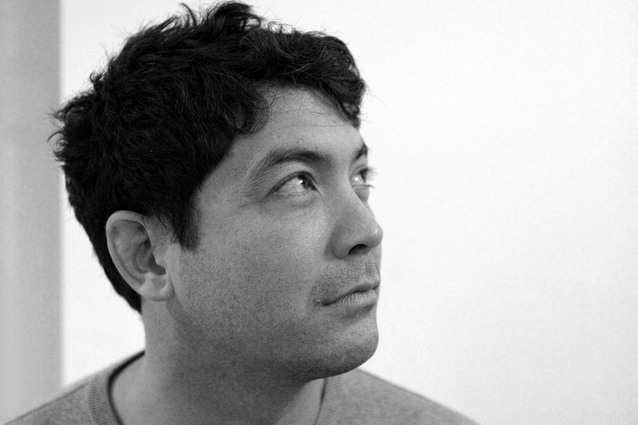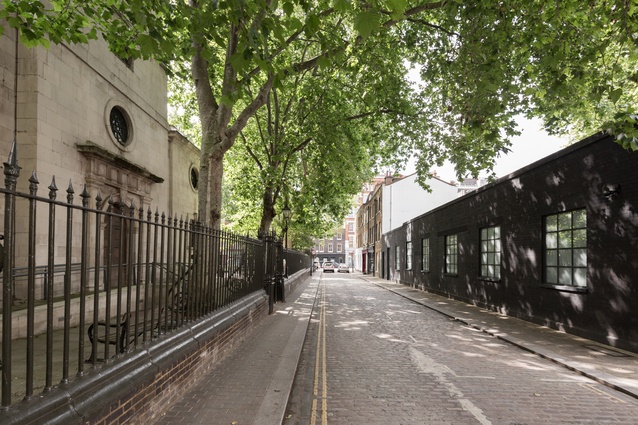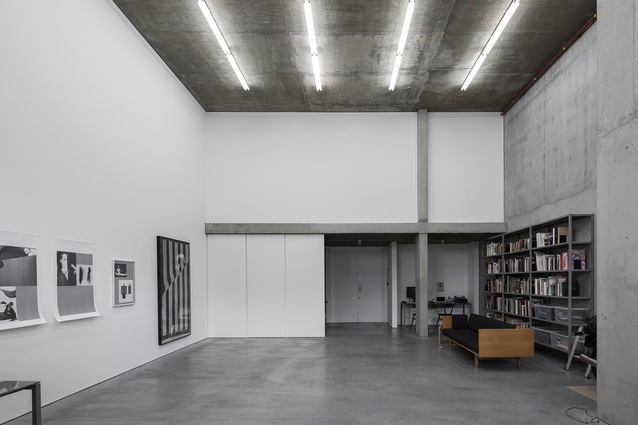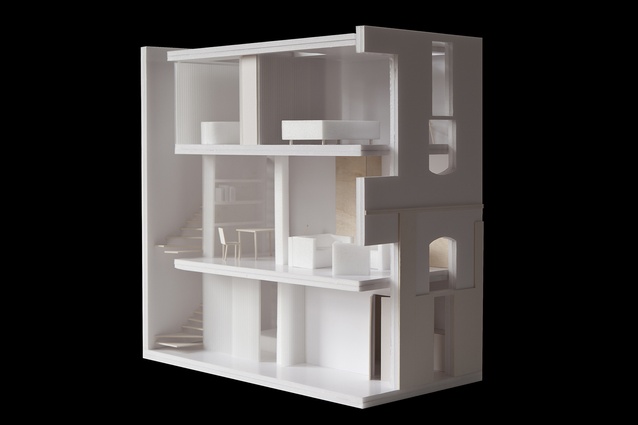Offshore talent
Jason Whiteley is a New Zealand designer who worked for Herzog & de Meuron before starting his own London-based firm in 2012 with a fellow colleague, Donald Matheson. Amelia Melbourne-Hayward chatted with Whiteley about learning from the past and his passion for bringing forgotten buildings back to life.
Amelia Melbourne-Hayward: You originally studied physics and mathematics at Canterbury University – what made you decide to turn towards architecture and design?
Jason Whiteley: There was a twelve year old kid in my second-year university calculus class who kept getting A+’s. Watching him helped me reassess my own mathematical talent. Meanwhile architecture seemed mysterious and full of promise – on good days it still does.
AMH: What were a few points you took away from your time with Herzog & de Meuron?
JW: How to keep a project alive and open to outside influences, how to structure the design process and the standard for making good architecture. From their studio in Basel – a city about the size of Christchurch – Herzog & de Meuron could deliver projects anywhere in the world and that was a useful approach to learn.
AMH: How did Matheson Whiteley come about, and what was the idea behind the creation of the firm?
JW: Donald and I both worked at Herzog & de Meuron, so that was a common point of reference. After I moved to London we would meet up, usually to discuss practical things like fees or sub-consultants. The practice grew from a shared interest in getting things done. We’re both interested in performance and continuity. Today’s challenge is to engage with the way buildings are currently procured and delivered – which seems tremendously flawed – and from that starting point, to produce architectural quality.

AMH: What projects are Matheson Whiteley working on at present?
JW: This summer we have been preparing a feasibility study for the Science Museum’s new rooftop Space Gallery in conjunction with Arup – it’s been a great project to explore our interest in the legacy of British hi-tech. In planning is a 900 sqm contemporary art gallery, studio and art school in Suffolk and a new photography studio in London.
We’re also completing the restoration of a Grade-2 listed staircase in Mayfair for a London gallery, a fitness centre in Kings Cross and a Milanese restaurant and deli – our first hospitality project. Two housing projects are on site, along with a 25,000 sqm workspace in Seacontainers House for a media company on the Thames in Central London.
Further afield, we have some projects in New Zealand – a large manufacturing and design head quarters for an engineering company and a small community center in Christchurch. We’re also working on a contemporary art gallery in New York and are just beginning design work for a ski lodge in New Hampshire. It’s a nice range of projects.
AMH: Where in the world is your favourite place to create buildings, and why?
JW: Somewhere optimistic. It is clear that financial speculation is the way we have chosen to make our cities and this has proven to be a powerful driver. But there is enough built evidence – both good and bad – to say that cities require more profound ideas than financial speculation to be viable.
AMH: What would you say is the project that you’ve enjoyed working on the most in your career thus far?
JW: Working in London, many projects reuse existing buildings and pieces of infrastructure. Often these are at the point of failure. Reuse is a really current architectural topic because it relates so fundamentally to sustainability. It’s also a topic a little bit at the margins of architecture – there isn’t really an architectural theory of reuse.
Two recent gallery projects – Hollybush Gardens and Modern Art – were important because they coax unused and forgotten spaces back into public life. The new facade of Modern Art completes the conservation setting of Sir Nicholas Hawksmoor’s St. Luke’s Old Street (1733). Hawksmoor is a particular hero of mine, so it was a pleasure to work in his shadow.
These projects helped us develop a sensitivity towards the expressive potential of existing conditions, along with a working method for relating disparate elements together to form new wholes – neither explicitly modern, nor overly beholden to the past.
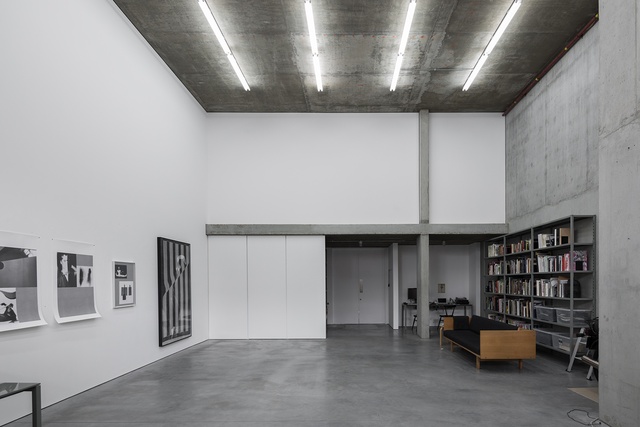
AMH: You also design furniture (i.e the Studio Chair for Resident), are there any upcoming designs in that field?
JW: Currently we’re developing a pendant light for a restaurant as well as a kitchen sink with the artist Ryan Gander. Our collaboration with Resident came at an important early moment in the practice. As a company they are knowledgeable, ambitious and supportive. We enjoy an ongoing dialogue with them and I’m sure this will bear fruit again in the future.
AMH: Does your furniture design affect your architecture? And the other way around?

JW: Whether architecture or furniture, we often look to the past as a way of war gaming the present. The past lets you imagine alternative scenarios which are not available in contemporary life. For example, what is the character of a house with no corridors? Or what is the quality of a building made of only one material? Or what is it like to sit on the floor while working?
These were once natural categories – ways of living which make certain things possible and other things impossible. Working through the history of the discipline is useful because it provides you with tools to speculate about the future – what architecture is able to do, or it’s limits, so to speak.
AMH: You are a visiting critic at several universities over the world, what does the future of architecture and design look like in up-and-coming work?
JW: As education and living costs rise, the more interesting students are exploring alternatives to full-time university study. This seems inevitable and exciting and we are keen to support it. We have started a new role as thesis mentors at the University of Pisa. One or two students come to our studio for a few months and we develop a project together. Our first student, Giulia Giorgelli, is researching the loss of affordable studio space for artists and designers in East London due to gentrification.
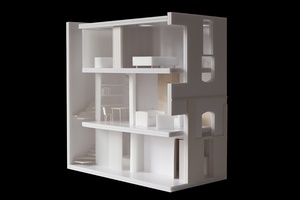
It’s a real problem in our neighbourhood and for our friends. Giulia is proposing an alternative model of development which would allow artists and designers to remain in the area. So the project has an aesthetic dimension, but also a social and economic one. It’s very engaged and draws together threads from our work in practice. Perhaps her solutions will have some significance.
AMH: How do you maintain ties to New Zealand, and do you have any plans to return and practice here?
JW: We are working on projects at various stages in New Zealand – a 20,000 sqm design and manufacturing facility in Christchurch, two small houses and a community center. In parallel, we recently guest edited a series on New Zealand houses with Giles Reid for the cult blog OfHouses and were short-listed for the New Zealand contribution to Venice Biennale. Those activities certainly maintain a level of ongoing engagement.
But beyond specific projects, I think it is true that architecture is an oral tradition. You hone and develop a position through conversations with people who are generous enough to engage with you – in New Zealand that includes colleagues, teachers, friends, even rivals. I feel fortunate to have those connections.

